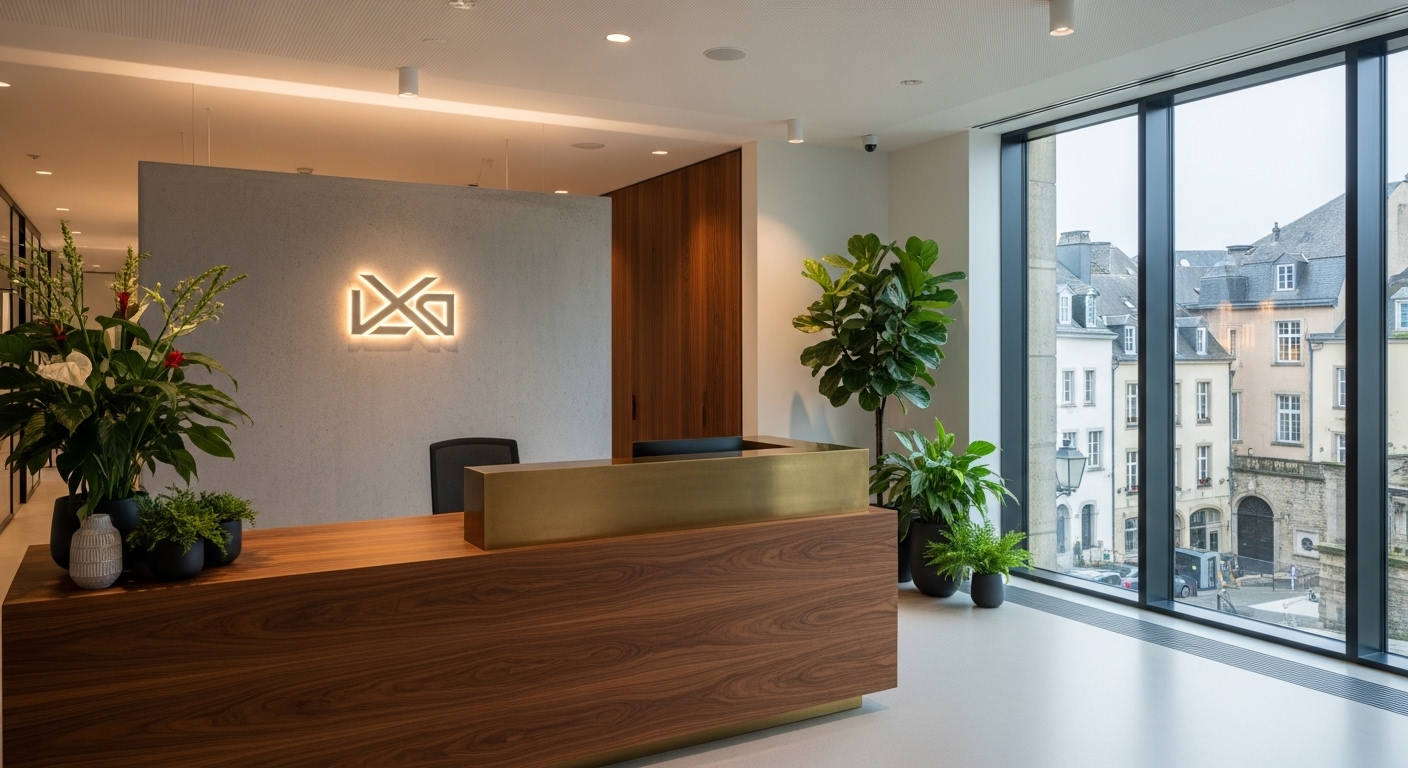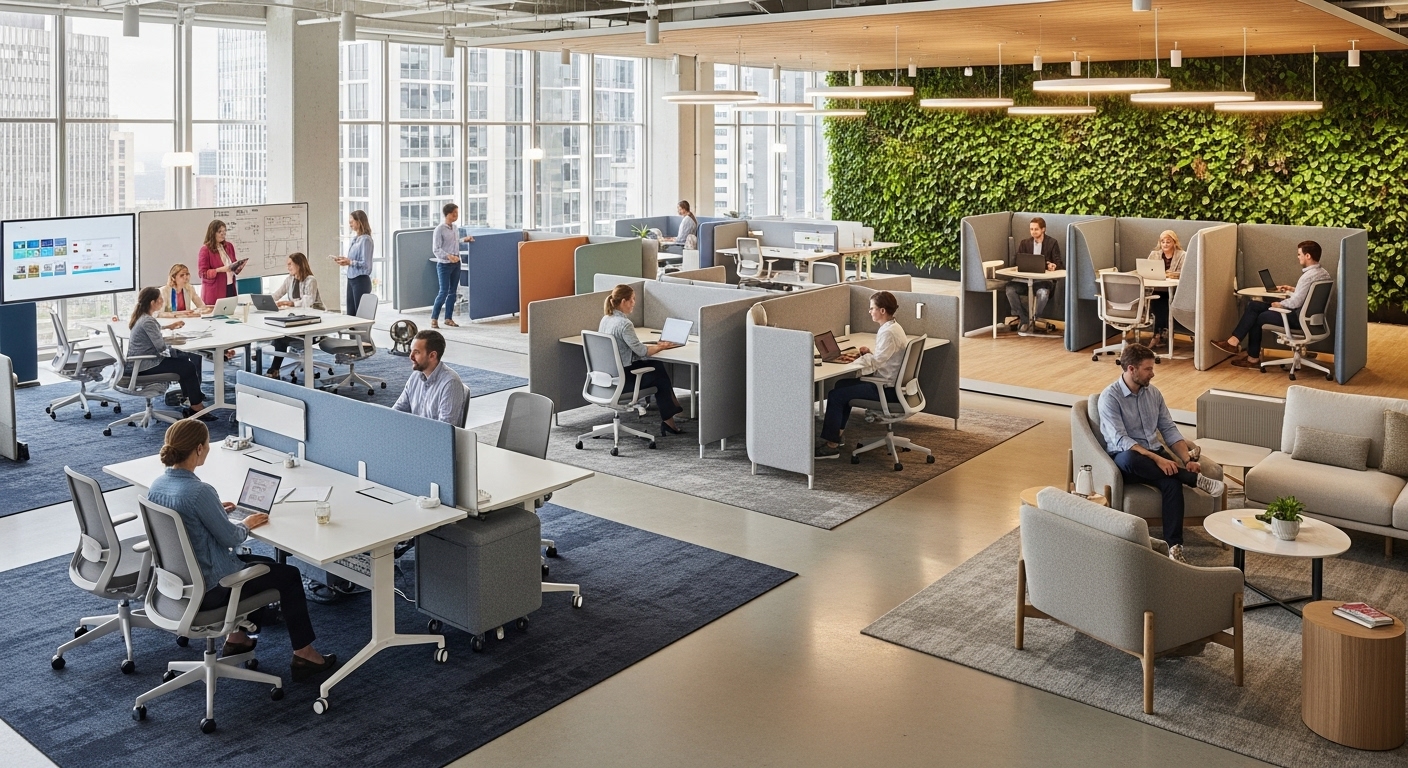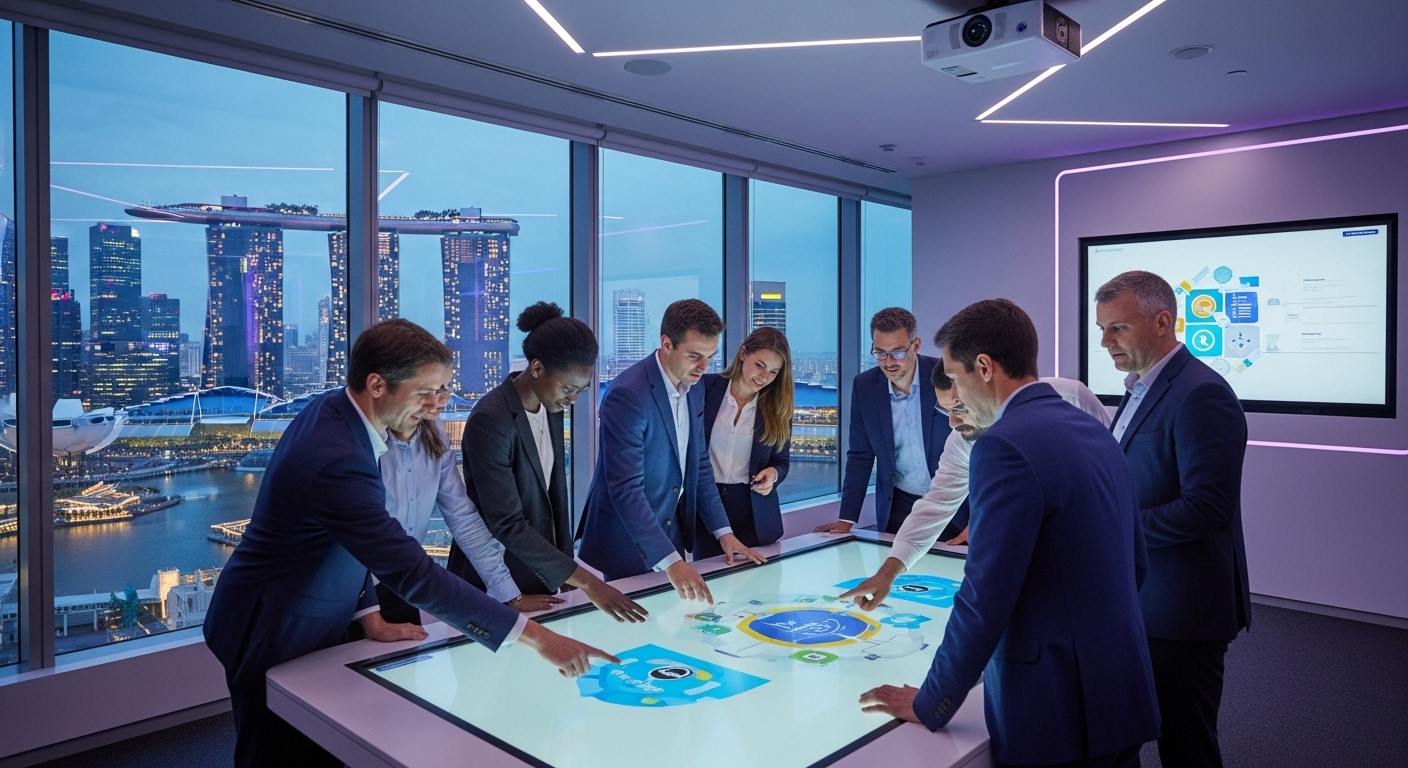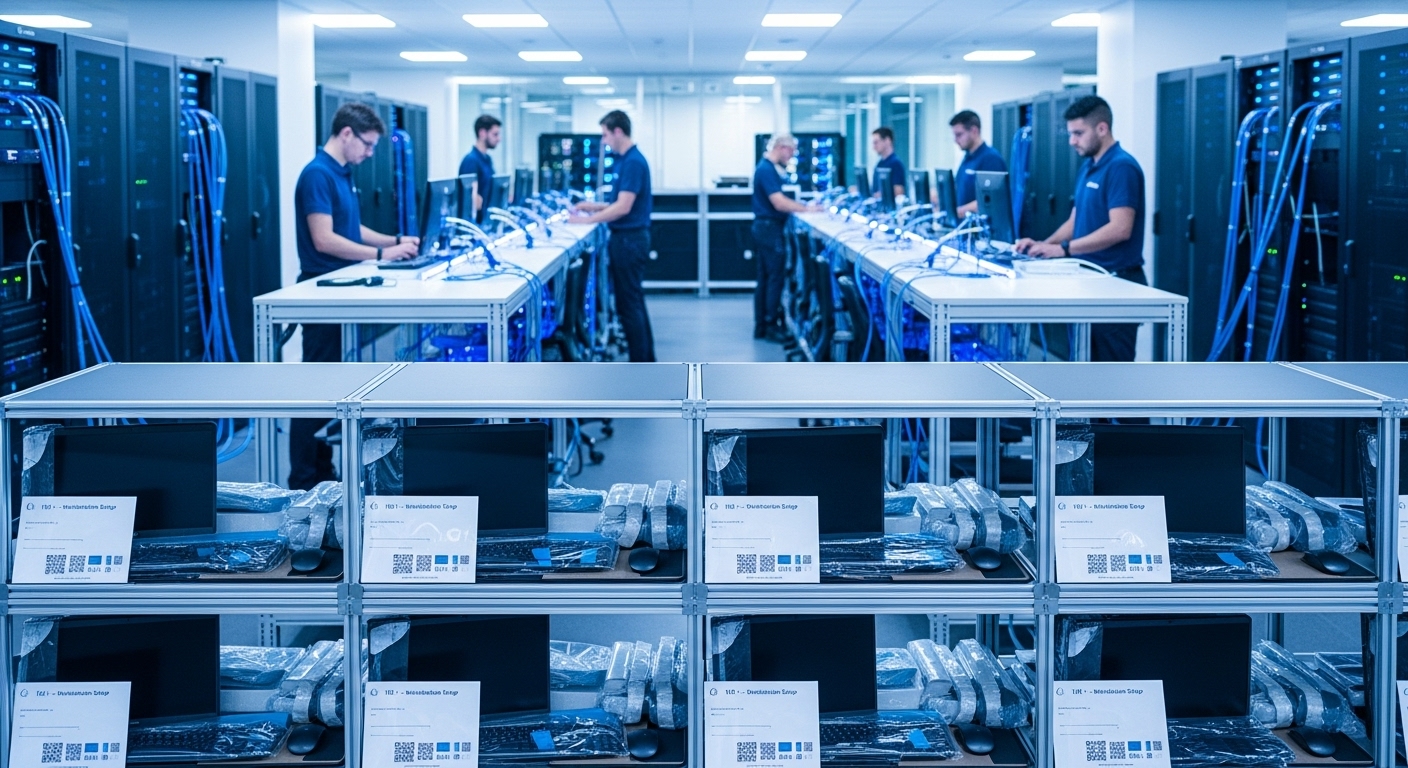In the high-stakes world of international finance and European governance, an office is far more than just a place to work—it’s a declaration of identity. For companies operating in the Grand Duchy, the traditional, sterile corporate environment is no longer enough to attract premier talent or resonate with a global clientele. Branding your physical space has evolved from a simple logo on the door to a sophisticated, multi-layered narrative that communicates your values, vision, and culture. This article explores how to move beyond the metaphorical ‘bank vault’ aesthetic and craft a compelling, modern brand identity within your physical workspace, turning your office into a powerful strategic asset that drives engagement and growth.
The New Corporate Story: Moving Beyond Traditional Aesthetics
For decades, the archetype of a corporate office, particularly in the financial sector, was one of austerity and impersonal grandeur. Think polished marble floors, heavy mahogany desks, and an atmosphere that prioritized intimidation over inspiration. Today, that model is obsolete. The modern workforce, especially the top-tier talent that businesses compete for, seeks meaning, connection, and a sense of belonging. Your office design is a primary vehicle for telling your company’s story. It’s about creating an environment that embodies your brand’s promise. Are you an innovative fintech startup? Your space should reflect agility, collaboration, and transparency with open layouts, flexible furniture, and integrated tech. Are you a law firm priding itself on a modern, client-centric approach? Your design might blend traditional materials with contemporary art and technology to signal stability and forward-thinking. The key is to consciously design every element to reinforce your core narrative, transforming the office from a mere container for work into an active participant in your brand’s expression.
The First Impression: Designing a Reception That Speaks Volumes
The reception area is your brand’s physical handshake. It’s the first point of contact for clients, partners, and potential new hires, and it sets the tone for every interaction that follows. This space must do more than just manage visitor flow; it must immediately immerse them in your brand’s world. In a dynamic international hub like Luxembourg City, where global executives and diverse talent converge, a powerful first impression is non-negotiable. Consider the material palette: does it reflect your brand? Natural stone and warm woods can convey stability and a connection to nature, while brushed metals and sleek concrete suggest innovation and modernity. A digital display can tell a dynamic brand story through video or interactive content, far more engagingly than a static poster. Even the choice of furniture—be it designer pieces that signal luxury or modular units that communicate flexibility—contributes to the narrative. The goal is to create a welcoming, memorable, and, above all, authentic introduction to who you are as a company.
Integrating Local Identity: The Tri-Lingual, Multicultural Advantage
Branding isn’t just about your company; it’s also about showing you understand your context. Luxembourg’s unique character is defined by its multiculturalism and trilingualism (French, German, and Luxembourgish). Weaving this local fabric into your office design demonstrates respect and sophistication. This can be achieved in subtle yet powerful ways. Wayfinding and signage can be elegantly designed to incorporate multiple languages, reflecting the daily reality of life in the Grand Duchy. You could commission artwork from local artists to adorn your walls, creating a space that feels rooted in its community. Naming meeting rooms after significant places or figures in Luxembourgish history adds a layer of storytelling and cultural appreciation. By acknowledging and celebrating the local identity, you create a more inclusive and engaging environment for your diverse workforce and signal to international clients that you are a globally-minded yet locally-grounded partner.
The Branded Ecosystem: Consistency From Meeting Rooms to Breakout Zones
A brand’s impact is diluted if it’s confined to the reception area. To be truly effective, your brand identity must permeate every corner of the workspace, creating a cohesive and immersive experience. This means extending the design language—your chosen colors, materials, and typographic styles—throughout the entire floor plan. Meeting rooms, often generic and uninspired, are a prime opportunity for branding. Instead of ‘Meeting Room 4’, consider names and themes that relate to your company’s history, values, or industry. A breakout zone shouldn’t just be a collection of leftover furniture; it should be a thoughtfully designed space that encourages the kind of informal collaboration your culture values. Even the smallest details, like branded stationery, custom-designed acoustic panels, or curated coffee and tea selections in the kitchen, contribute to the overall ecosystem. This consistency reinforces your culture daily and ensures that employees are constantly surrounded by the physical manifestation of the brand they are helping to build.
Sustainable Storytelling: Aligning Your Space with Green Values
In today’s market, sustainability is a powerful brand differentiator. A commitment to environmental responsibility is no longer a niche interest but a core expectation for clients and employees alike, particularly in progressive European centers. Your office space provides a tangible way to demonstrate this commitment. This goes far beyond placing a recycling bin in the corner. It involves specifying sustainable, low-VOC (volatile organic compound) materials, investing in energy-efficient lighting and HVAC systems, and maximizing natural light. One of the most impactful strategies is biophilic design—the integration of natural elements like plants, water features, and natural materials into the built environment. This not only enhances air quality and employee well-being but also tells a powerful story about your brand’s commitment to a healthier planet. In a market like Luxembourg City, which champions green finance and sustainability initiatives, an eco-conscious office design aligns your company with the nation’s forward-looking values.
Tech-Infused Branding: Smart Offices as a Brand Statement
For any company in the finance, tech, or professional services sectors, being perceived as innovative and efficient is crucial. Your office technology can be a powerful tool for branding your company as a forward-thinking leader. A ‘smart office’ isn’t about gadgets for their own sake; it’s about creating a seamless, intuitive, and productive environment that reflects a commitment to efficiency. This can include features like wireless presentation systems that work flawlessly, an integrated app for booking desks and meeting rooms, and lighting and climate control that adapt to occupancy. These features don’t just improve the daily experience for employees; they send a clear message to visiting clients that your organization is modern, sophisticated, and invested in the best tools for the job. This tech-infused branding is particularly potent for companies looking to disrupt traditional industries, as it physically demonstrates a departure from outdated, cumbersome ways of working.
The Sensory Signature: Sound, Scent, and Texture in Branding
The most memorable brands engage more than just the eyes. A truly immersive brand experience is multi-sensory. Consider the ‘sensory signature’ of your workspace. Acoustics are a critical, yet often overlooked, element. In open-plan areas, thoughtful acoustic design using sound-absorbing panels, baffles, and even white noise systems can reduce distractions and stress, branding your company as one that cares for employee focus and well-being. Scent is another powerful tool; a subtle, custom-developed ambient scent in the reception area can create a lasting and unique memory associated with your brand. Finally, pay attention to texture. The tactile feel of a leather chair, a wooden handrail, or a woven fabric wall covering adds a layer of quality and sophistication that purely visual design cannot achieve. By crafting a deliberate sensory experience, you create a deeper, more emotional connection to your brand for everyone who enters the space.
In conclusion, branding your space is an exercise in strategic storytelling. Moving beyond the cold, impersonal ‘bank vault’ aesthetic is essential for thriving in the modern business landscape. The process involves crafting a powerful first impression in your reception, thoughtfully integrating local culture, and maintaining a consistent brand ecosystem throughout the entire office. It requires a commitment to telling your story through sustainable design choices and leveraging smart technology to signal innovation and efficiency. By engaging all the senses—sight, sound, and touch—you can create a truly immersive environment. For any organization operating in the competitive and sophisticated market of Luxembourg City, the physical workspace is no longer a passive backdrop. It is an active, vital asset that can attract premier talent, captivate clients, and build a resilient, deeply-rooted corporate culture that will set you apart for years to come.





